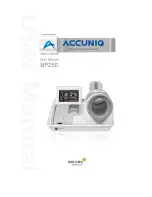
1.
Introduction
1.1. Features
The blood-pressure monitor is a fully automatic, digital blood-pressure measuring device for
use on the upper arm, which enables very fast and reliable measurement of the systolic and diastolic
blood-pressure as well as the pulse frequency by way of the oscillometric method of measuring.
The device offers a very high and clinical tested measurement accuracy and has been designed to provide
a maximum of user-friendliness.
Thanks to the large LCD display of BP 3BT0-A, both operational status and cuff pressure are visible for the
entire duration of the measurement.
Before using, please read through this instruction manual carefully and then keep it in a safe place.
For further questions on the subject of blood-pressure and its measurement, please contact your doctor.
Attention!
1.2. Important information about self-measurement
•
Do not forget:
self-measurement means Control,
not diagnosis or treatment. Unusual values must
always be discussed with your doctor.
Under no
circumstances should you alter the dosages of any
drugs prescribed by your doctor.
•
The pulse display is
not
suitable for checking the frequency of heart pacemakers!
•
In cases of cardiac irregularity (Arrhythmia), measurements made with this instrument should only be
evaluated after consultation with the doctor.
Electromagnetic interference:
The device contains sensitive electronic components (Microcomputer). Therefore, avoid strong electrical or
electromagnetic fields in the direct vicinity of the device (e.g. mobile telephones, microwave cookers).
These can lead to temporary impairment of the measuring accuracy.
2.
Important information on the subject of blood-pressure and its Measurement
2.1. How does high/low blood-pressure arise?
The level of blood-pressure is determined in a part of the brain, the so-called circulatory centre, and
adapted to the respective situation by way of feedback via the nervous system.
To adjust the blood-pressure, the strength and frequency of the heart (Pulse), as well as the width of
circulatory blood vessels is altered. The latter is effected by way of fine muscles in the blood-vessel walls.
The level of arterial blood-pressure changes periodically during the heart activity: During the «blood
ejection» (Systole) the value is maximal (systolic blood-pressure value), at the end of the heart’s «rest
period» (Diastole) minimal (diastolic blood-pressure value).
The blood-pressure values must lie within certain normal ranges in order to prevent particular diseases.
2.2. Which values are normal?
Blood pressure is too high if at rest, the diastolic pressure is above 90 mmHg and/or the systolic blood-
pressure is over 140 mmHg. In this case, please consult your doctor immediately. Long-term values at this
level endanger your health due to the associated advancing damage to the blood vessels in your body.
2
Summary of Contents for BP 3BT0-A
Page 3: ...Automatic Blood Pressure Monitor Instruction Manual...
Page 15: ...12...
Page 17: ...1 1 1 1 1 1 _ 1 1 2 2 2 2 2 2 1 1 K K 2 2 2 2 K K K 90 140 K 100 60 14...
Page 18: ...15 mmHg 3 120 2 2 3 3 K A A 100 60 100 140 60 90 140 160 90 100 160 180 100 110 180 110...
Page 19: ...16 Diabetes mellitus K K 40 3 3 BP 3BT0 A K K 1 22 32 1 L 22 32...
Page 20: ...17 4 4 4 4 1 1 4 316 R6 1 5 1 5 1 2 K K I 4 4 2 2 BP 3BTO A 6 VDC 600mA a 230 110 I 4 4 3 3...
Page 21: ...5 5 5 5 1 1 5 5 5 2 2 K K 15 10 5 3 a 2 3 3 18 2 3 cm...
Page 22: ...19 5 5 4 4 a K K I 5 5 5 5 5 3 5 5 6 6 K K O I MR 3...
Page 23: ...6 6 1 20 ERR 1 20 ERR 2 ERR 3 ERR 5 HI 300 200 5 LO 40 1 2 1 2 3...
Page 24: ...7 a 8 8 3 21...
Page 26: ...23...
Page 27: ...Automatyczny aparat do mierzenia ci nienia Instrukcja u ywania 24...
Page 38: ...35...
Page 39: ...Automata v rnyom sm r Haszn lati utas t s 36...
Page 50: ...47...






































